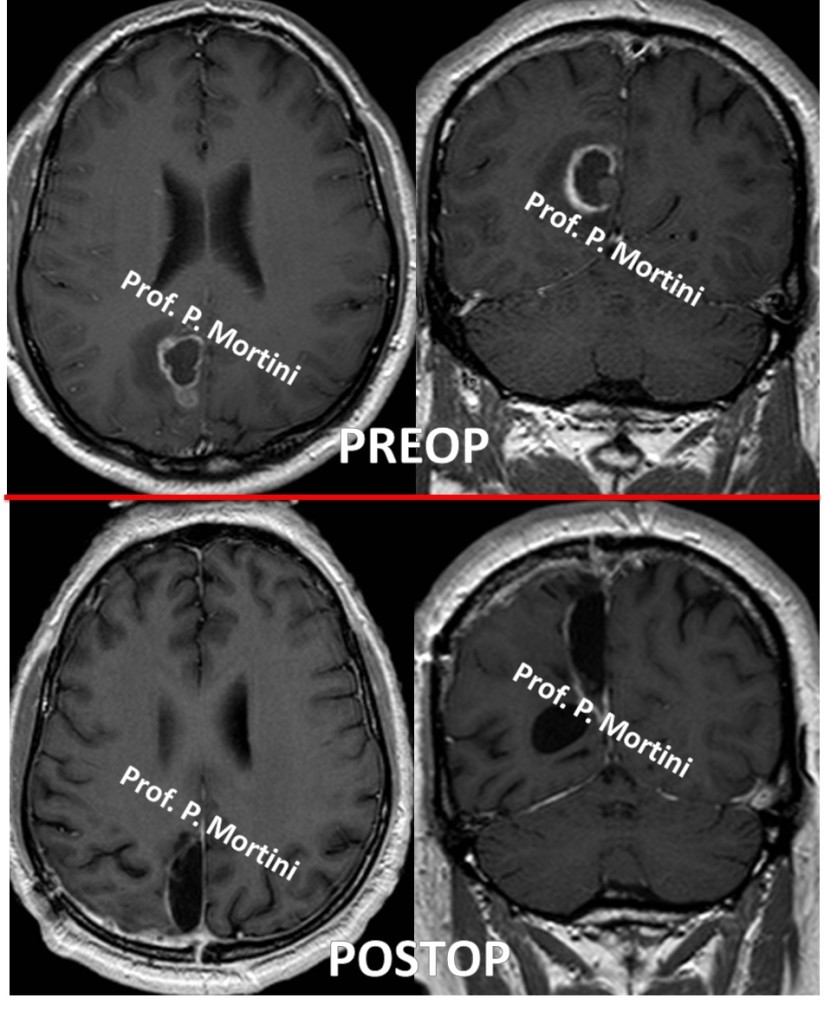Oligodendrogliomas are a type of glial cell tumor arising from oligodendrocytes, glial cells that form insulation around neurons, that helps them conduct electrical impulses. These uncommon, usually slow-growing, tumors occur most often in middle-aged patients.
Symptoms
The symptoms of oligodendrogliomas are similar to those of other gliomas, but seizures in particular are the most common presenting symptom.
Diagnosis
Like other brain tumors, these tumors are diagnosed with radiological imaging. Ninety percent of these tumors show some degree of hardening or calcification.
Treatment
Although some slow growing tumors can be watched for progression, surgery is usually indicated in these tumors for diagnosis. If the size and location of the tumor is favorable, surgical resection should be attempted. More complete tumor resection is associated with better outcome. Recently, the role of chemotherapy as an important treatment for some oligodendrogliomas has been established. Biopsied or resected oligodendrogliomas should be tested by neuropathologists for specific chromosomal abnormalities that confer increased sensitivity to some types of chemotherapy.
 English
English Italiano
Italiano